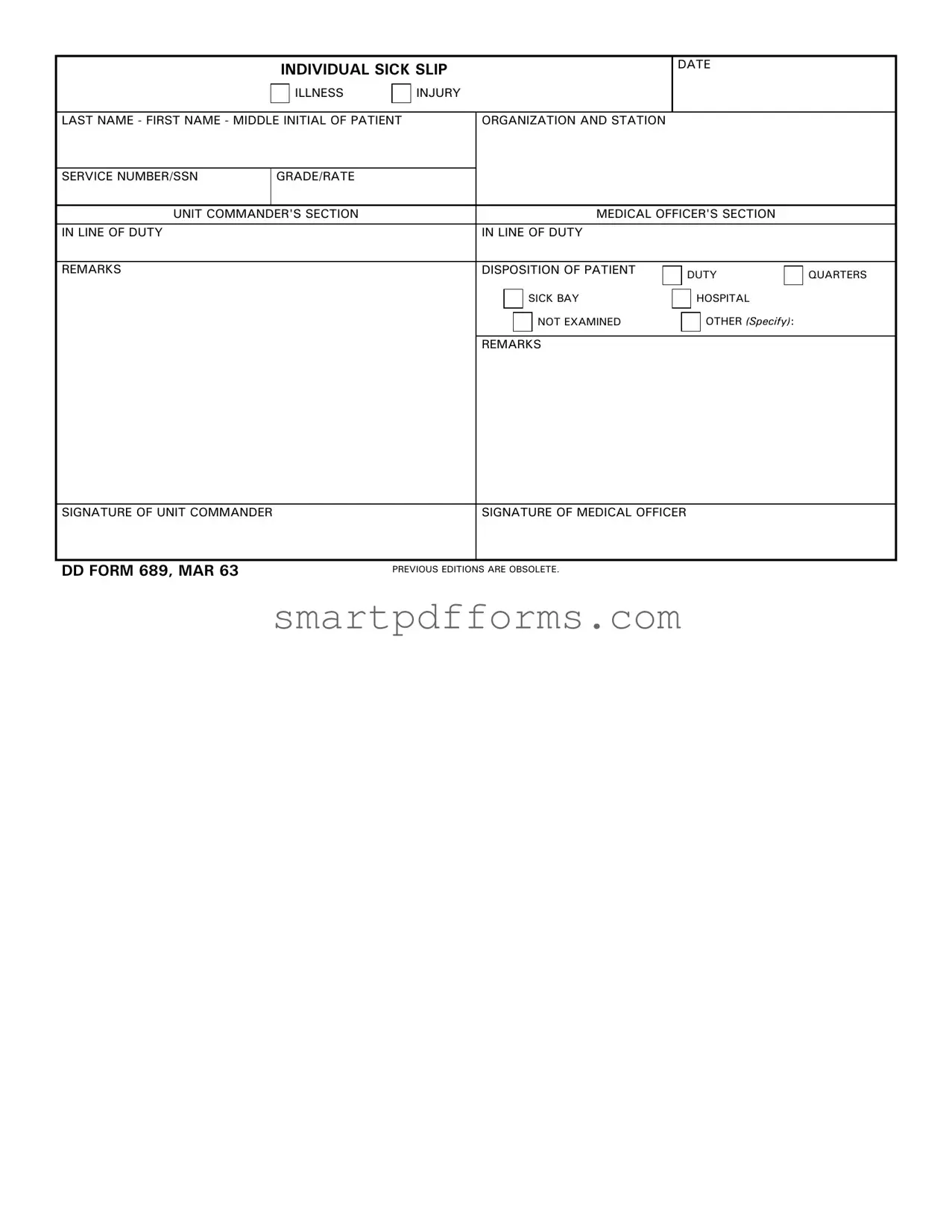The DD Form 689, commonly referred to as the Individual Sick Slip, serves as a crucial document within military operations, offering a standardized method for recording incidents of illness or injury among service members. The form captures essential details such as the date of the ailment, the type of illness or injury experienced, and the personal information of the affected individual, including their last name, first name, middle initial, organization and station, service number or social security number, grade or rate, and the unit commander's details. Additionally, it features sections designated for both the unit commander and the medical officer, where decisions regarding the patient's disposition—whether they are to return to duty, be placed in quarters, sent to the sick bay, hospitalized, not examined, or other specified actions—are documented. Signatures from both the unit commander and the medical officer validate the entries, ensuring the form is officially acknowledged. The DD Form 689 is not only a means of tracking the health status and medical interventions for service members but also plays a significant role in maintaining the operational readiness of military units by ensuring that decisions regarding the health and deployment of personnel are systematically recorded and executed.

